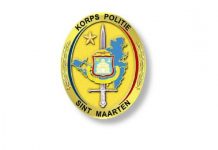ST. MARTIN/CARIBBEAN ISLANDS – In Puerto Rico’s Cabo Rojo National Wildlife Refuge, members of the public went on a morning birding session, followed by a talk on endemic birds, in particular the “Reinita” – the Adelaide’s Warbler, known for its delightful song.
On Grenada’s Belmont Estate, fifth-graders excitedly held bird bags, learned about mist netting and banding, and enjoyed releasing the birds. At the University of Havana’s School of Biology students organized knowledge piñatas, endemic bird bingo and other games and exhibits. And in Bermuda, besides the annual bluebird nestbox competition, members of the Bermuda Audubon Society sailed to Nonsuch Island in search of the National Bird, the endemic Bermuda Petrel, known locally as the “Cahow.”
What was all the fun and activity about? One major clue in all of the above is the word “endemic.” The annual Caribbean Endemic Bird Festival (CEBF), coordinated by BirdsCaribbean and its energetic partners across the region, begins on Earth Day (April 22) and ends on International Biodiversity Day (May 22). The festival celebrates the exceptionally high endemism in the region. Some 173 species of birds call the Caribbean home. That is, they are found nowhere else in the world. Many of these species live only on a single island, and many are endangered or threatened.
On St. Martin, the CEBF was celebrated at the Endemic Animal Festival, presented by the Les Fruits de Mer association at the St. Maarten Zoo. Over 400 visitors attended the event, learning about regionally-endemic birds as well as lizards, insects and other animals that live only on St. Martin.
For organizers of CEBF celebrations across the region, it is important to reach out to different groups. Birds – and in particular the “special” endemics that are unique to each island – have widespread appeal, touching hearts and minds in different ways. Each year, CEBF partners such as Grupo Acción Ecológica in the Dominican Republic, the Natural History Society of Puerto Rico and Jamaica’s Caribbean Coastal Area Management Foundation (C-CAM) offer new perspectives on endemic birds for visitors from overseas and students of all ages, educators, local families and youth groups such as Boy Scouts. Members of a group of grandparents (“Renacer”) were among those visiting the University of Havana exhibition. Many events were advertised via social and traditional media.
In Jamaica, C-CAM’s new Portland Bight Discovery Centre, in the Salt River wetland area, was the setting for an exciting day of activities for local high school students and teachers. Prizes (including Ann Haynes Sutton’s Birds of Jamaica field guide) were awarded in four categories for a student art exhibition with some stunning entries. An exploration of the surrounding mangroves and bird hide, including binocular practice, was literally an “eye-opener” for the students. Earlier, the National Environment and Planning Agency (NEPA) partnered with a local non-profit organization in deep rural Trelawny for the Spring Garden Bird Festival, where the very young Team Hummingbird were champion birdwatchers.
Over in the eastern Caribbean, the trans-boundary non-governmental organization Sustainable Grenadines Inc. (SusGren) took to the seas and led a series of bird-watching trips with its Junior Rangers and graduate BirdSleuth teachers. Their island excursions included an early morning trip at the invitation of the exclusive Palm Island Beach Resort (breakfast included); and extensive seabird and shorebird viewing via boat trips, around Union Island and its surrounding islets and rocks.
The CEBF would be nothing without partnerships, and new ones are being forged every year on every island. Non-governmental organizations such as “SOPI” (Sociedad Ornitológica Puertorriqueña), in Puerto Rico; private sector sponsors such as the Bermuda Electricity Company; government agencies such as Jamaica’s Forestry Department; and academic institutions such as the Cuban Zoological Society and the Institute of Jamaica’s Natural History Museum – all bring extra value to the activities by lending additional local expertise, materials and funds.
CEBF 2016 was, once again, an expression of joy and appreciation, and a learning experience for many. As the leader of a Boy Scouts group in Caguas, Puerto Rico put it: “What I was most pleased with were the activities for my students, teachers and the families. My boys thoroughly enjoyed it all.”
For more photographs and reports on CEBF activities, visit the Caribbean Bird Festivals Facebook page.
Photo Caption: Students from the Mary Hutchinson Primary School and the Stephanie Primary School having fun with binoculars during a bird-watching session on Union Island with Sustainable Grenadines, Inc. (Photo by Orisha Joseph)

































